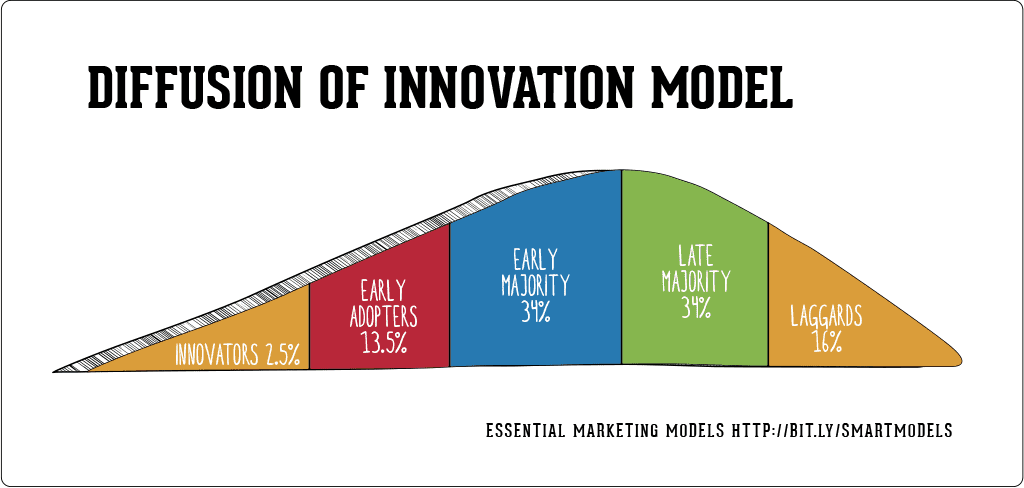DIFFUSION OF INNOVATION
Diffusion of Innovations is the
explanation of how, why, and at what rate do these new ideas of technology
spread. In the book Diffusions of innovations written by: Everett Rodgers
published in 1962, in this he states. He also argues the point of four main
elements influencing the spread of a brand-new creative idea, diffusion is the
process by which innovation is communicated and the innovation has to be widely
adopted in order to be self-sustain and reach the point of critical mass.
The main. Categories of people are Early
adopters, innovators, early majority, late majority and laggards. This concept
of diffusion of innovations was first studied by the French in the late 19th
century. The five stages in the decision innovation process is the Knowledge,
persuasion, decision (reject or accept) implantation, and the confirmation. The
first step is when an induvial is first exposed to the innovation but has no
idea about any information on it has not been driven, inspired or interested. The
second step is the induvial is interested in the innovation and wants to seek
out details and information on the topic and how it works. The third step is the
individual l takes the concept and using the innovation decides if they should
adopt or reject the innovation this is the most difficult stage the individual
also weighs the pros and cons. The fourth step is the individual will use and implement
the innovation to a degree depending on the outside situation and still wants
to learn the most they can about this. The final and 5th step is the
individual finalizes and makes her/her decision if they want to keep using the
innovation and if they have made the correct decision. By using this method innovations
and new technologies seems to spread, catch on to new trends and allow the
early adopters to be pros. The downside is the individual wastes time of they don’t
like the innovation the concept and they then would promote the product/ service
or idea. https://en.wikipedia.org/wiki/

Comments
Post a Comment